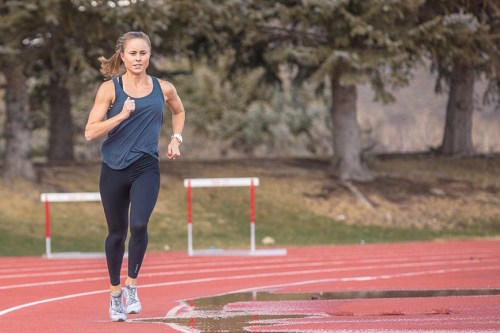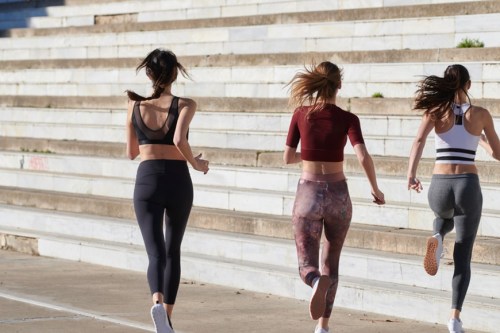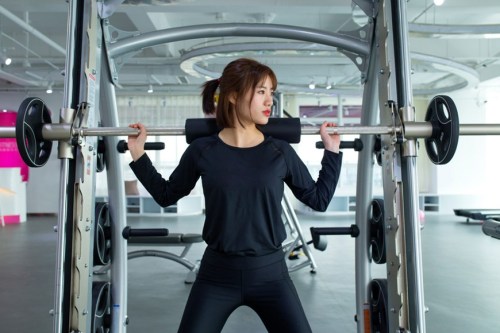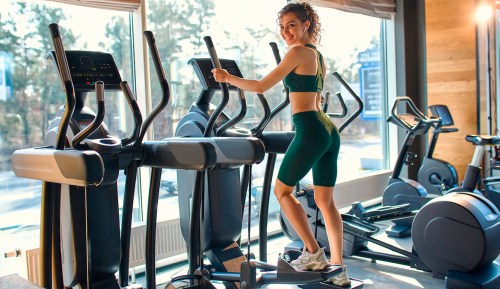5 upper-body exercises runners can do to add power to their stride
Runners should do these 5 upper-body moves once a week to add more power to their strides and efficiency to their form, according to a run coach.

When it comes to running, the lower body gets a lot of the limelight—the musclesgroups from heel to hip, in particular. But while strong glutes and hamstrings will get you to the finish line, it’s a solid upper body that’ll help you chase down your personal best.
Danny Mackey, head coach for the Seattle-based Brooks Beasts Track Club, says “communication” between the upper and lower body, and balance between the two, is crucial. “When there’s a weak link in the chain, like powerless arms, your body isn’t going to run as efficiently,” he says.
Racking up miles should be your focus when training, but Mackey says incorporating some upper-body strength work into your routine will help you in the long run. (Heh.) As you start to fatigue during a race, your form tends to break down, but stable arms and shoulders will help you maintain a forward lean, he says. “Your elbows should bend at 90–120 degrees for sprinting and be tucked in by your sides. The angle of your elbows in the front should be less than the angle in the back for perfect form,” Mackey says.
“When there’s a weak link in the chain, like powerless arms, your body isn’t going to run as efficiently.”
You also want to swing your arms from your shoulders, not the elbows, and the opposite arms and legs should be in sync when running. This will help give you that last push you need when your legs are fatigued. “If you don’t swing your arms properly, the result is that your strides are shortened,” Mackey explains.

A variety of push, pull, and balance exercises for the arms and shoulders are recommended, but Mackey also stresses the importance of working your back. Training the entire posterior chain from your calves up to your neck will help deepen that connection between the upper- and lower-body. “There’s [a] fascia line that goes from one shoulder to the opposite glute. You want to make sure that line of communication is strong. Sometimes, a weak glute can be linked to a weak shoulder,” Mackey says.
And how often should you be doing these exercises? Mackey suggests four reps of each for three to four rounds at least once a week. Lifting heavier with lower reps will help you build more endurance. “Running is a high-rep, low-weight exercise, so when you strength-train with heavier weights, it trains different muscle fibers,” he says. “It creates variability in your training and also prevents burnout.”
Keep reading for upper-body moves that will power up your running game.

1. 45-degree dumbbell arch row
How to do it: Adjust an exercise bench to a 45-degree incline and lie on it, chest down. Hold a dumbbell in each hand with your thumbs facing each other and your elbows slightly bent. Keep your shoulder blades down your back. Gaze at the floor in front of you so your head aligns with your spine. Pretending there’s a lemon between your shoulder blades, draw them together to hold it in place as you pull the dumbbells back, keeping your elbows high, aiming to bring the weights in line with your lower ribs. Return to start for one rep.
2. Dumbbell push press
How to do it: Stand with your feet hip-distance apart and knees slightly bent. Hold onto a dumbbell in each hand, resting them on your shoulders with your elbows raised and palms facing each other. Dip your knees into a demi squat, then push up explosively with your legs as you press the weights overhead—trying to keep your biceps in line with your ears but not hyperextending at the elbows. Lower the dumbbells back to the starting position on your shoulders. That’s one rep.

3. Runner push
How to do it: You want to use a cable machine for this exercise (or hold a single dumbbell in one hand). Start with 10 pounds of weight, and move up from there as you get stronger. Stand in a runner’s lunge with your right leg in front and your left leg extended behind you. Hold onto the cable (or free weight) with your right hand at your hip and your arm bent at 90 degrees. Bend your left arm at 90 degrees in front of you (like you were running). Then, drive through your right foot while bringing your left knee up to hip height as you bring your right arm forward and swing your left arm back (maintaining the L-shape in each). Return to start for one rep. Repeat a full set on each side for one round.
4. Lat pull-down
How to do it: Use a pull-down machine with a wide bar attached to the pulley for this one. Sit on the bench and make sure the knee pads are adjusted to your height. The pads will help prevent you from lifting your body up. Grasp the bar with both of your hands a little wider than shoulder-distance apart. Lean back slightly and keep your head aligned with your spine. Bring the bar down until it’s by your chest as you pull your shoulders wide and down, engaging your back muscles. Then, slowly extend your arms back up for one rep.

5. Good morning
How to do it: You’ll need to use a squat rack for this exercise. Stand with your feet shoulder-width apart, facing away from the rack, with a barbell resting across your upper back along the shoulders, not your neck. (Start with just using the bar and add weight as you progress.) Hold the bar in place and lift it off the rack by pushing with your legs. Take a few steps forward away from the rack. Standing upright, brace your core, and keep your shoulders retracted. Take a deep breath and hinge at the hips, not your waist, allowing a slight bend in your knees. Keep your back flat, and start to bring your torso parallel to the ground. Lean forward until you feel a stretch in your hamstrings, and then, as you exhale, reverse the move to stand up straight for one rep.
Phew! Learning to lift heavy weights can be intimidating. Read how Chinae Alexander overcame her fears and the unexpected place she found her power. Plus, this is why these types of strength training moves can help add years to your life.










